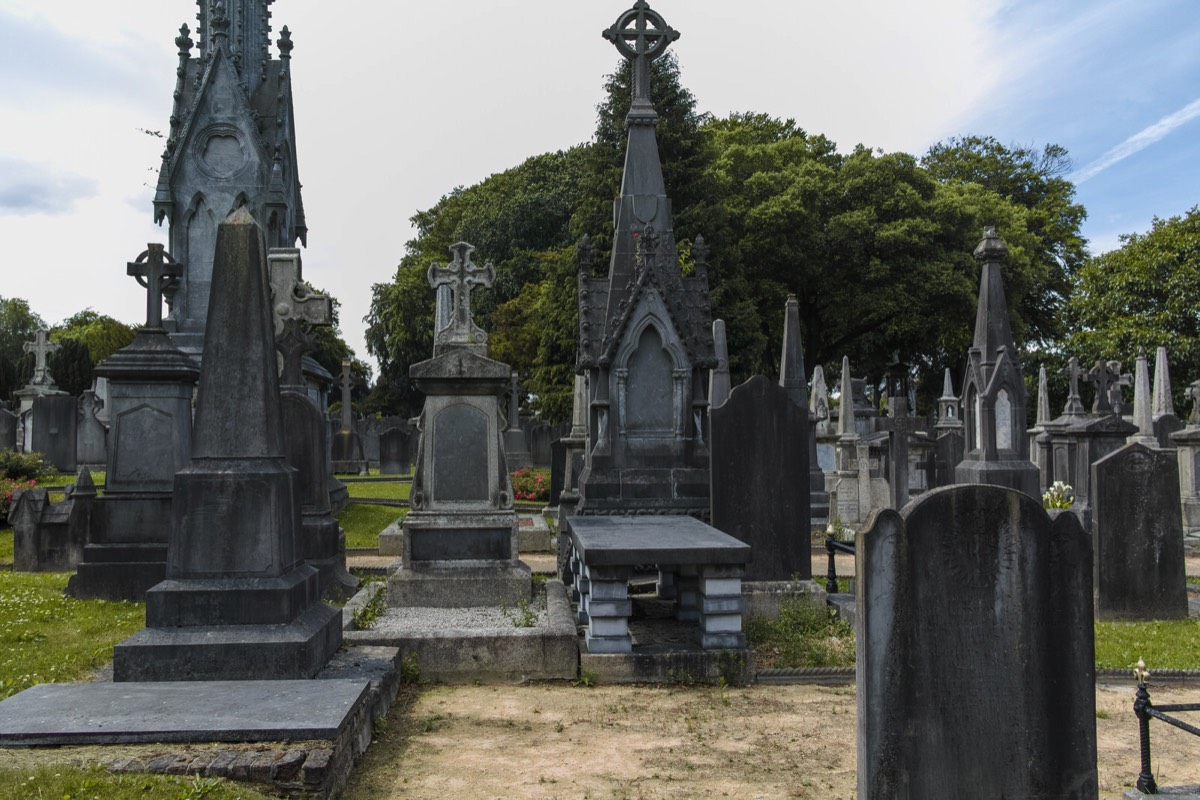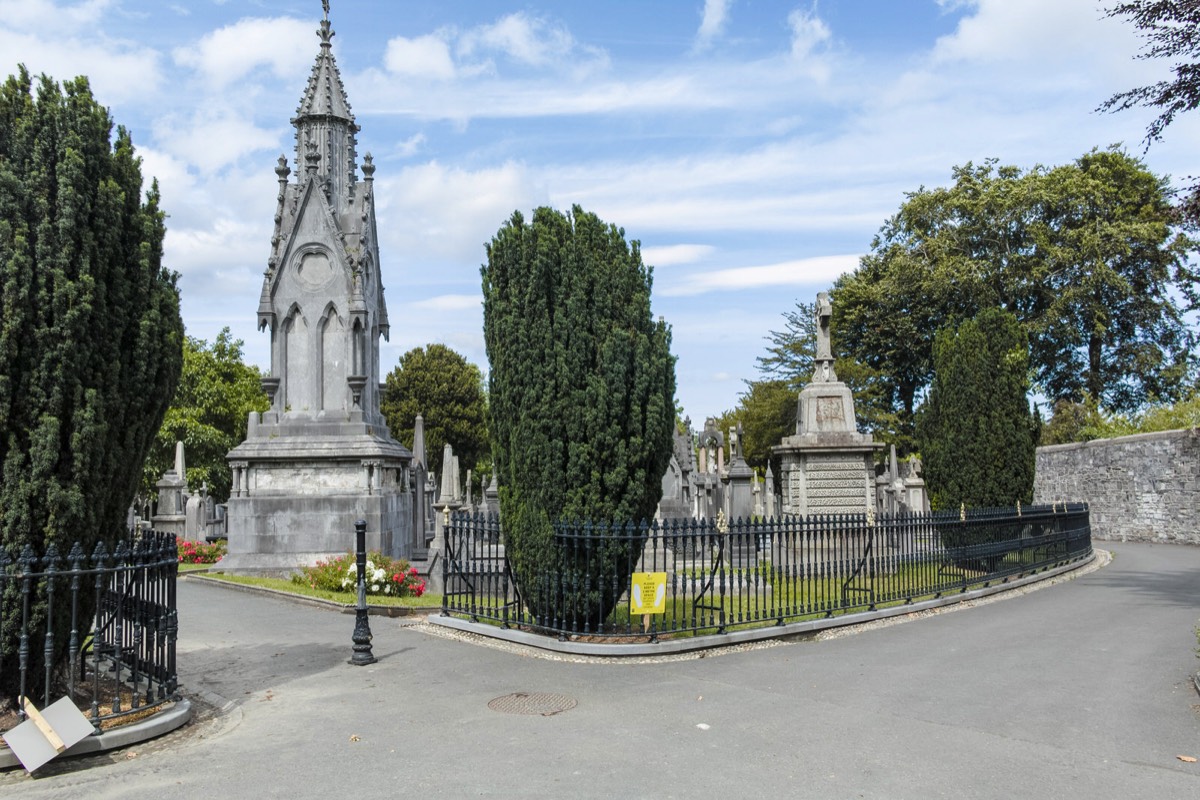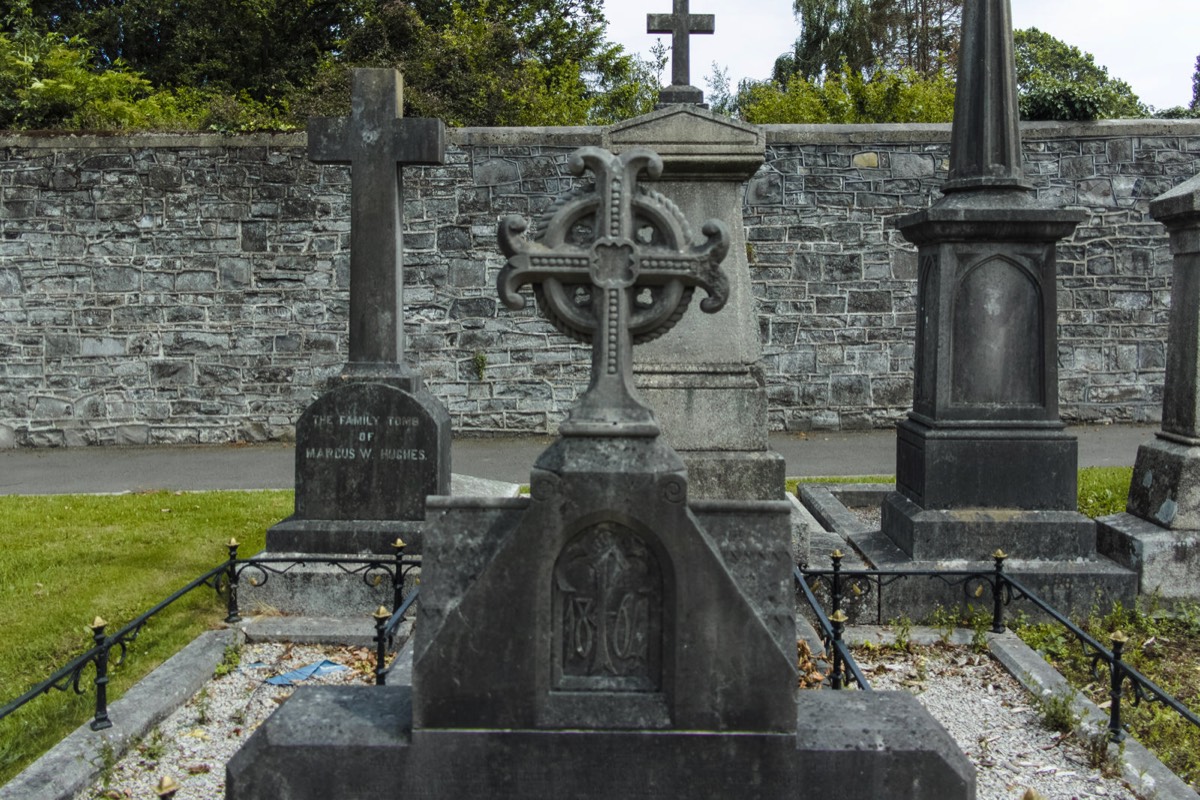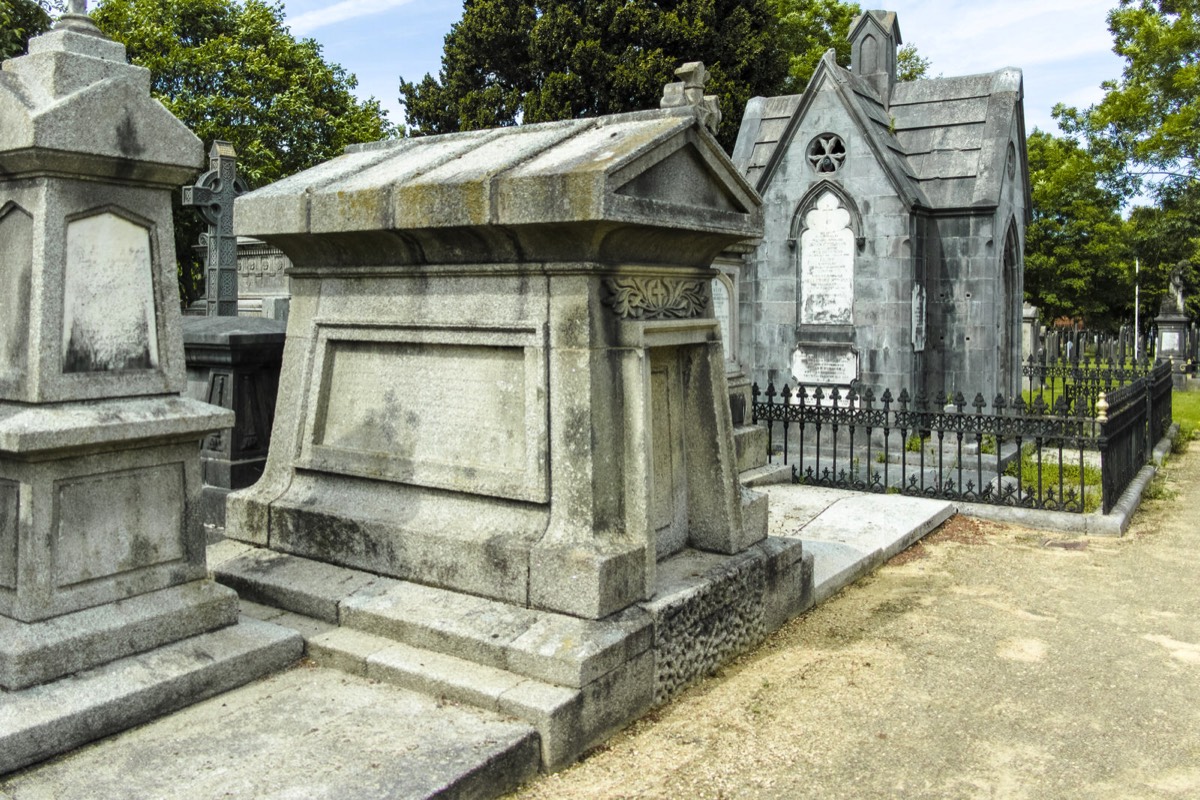GLASNEVIN CEMETERY 20 JUNE 2020 VISIT
GLASNEVIN CEMETERY ORIGINALLY PROSPECT CEMETERY
Glasnevin Cemetery is a large cemetery in Glasnevin, Dublin, Ireland which opened in 1832. It holds the graves and memorials of several notable figures, and has a museum.
The cemetery was initially known as Prospect Cemetery, a name chosen from the townland of Prospect, which surrounded the cemetery lands. Besides the famous interred at Glasnevin, nearly 800,000 people have been buried in Glasnevin in unmarked mass graves due to the death toll from the Great Famine of the 1840s and a later cholera epidemic.
Prior to the establishment of Glasnevin Cemetery, Irish Catholics had no cemeteries of their own in which to bury their dead and, as the repressive Penal Laws of the eighteenth century placed heavy restrictions on the public performance of Catholic services, it had become normal practice for Catholics to conduct a limited version of their own funeral services in Protestant churchyards or graveyards. This situation continued until an incident at a funeral held at St. Kevin's Churchyard in 1823 provoked public outcry when a Protestant sexton reprimanded a Catholic priest for proceeding to perform a limited version of a funeral mass. The outcry prompted Daniel O'Connell, champion of Catholic rights, to launch a campaign and prepare a legal opinion proving that there was actually no law passed forbidding praying for a dead Catholic in a graveyard. O'Connell pushed for the opening of a burial ground in which both Irish Catholics and Protestants could give their dead dignified burial.
Glasnevin Cemetery is a large cemetery in Glasnevin, Dublin, Ireland which opened in 1832. It holds the graves and memorials of several notable figures, and has a museum.
The cemetery was initially known as Prospect Cemetery, a name chosen from the townland of Prospect, which surrounded the cemetery lands. Besides the famous interred at Glasnevin, nearly 800,000 people have been buried in Glasnevin in unmarked mass graves due to the death toll from the Great Famine of the 1840s and a later cholera epidemic.
Prior to the establishment of Glasnevin Cemetery, Irish Catholics had no cemeteries of their own in which to bury their dead and, as the repressive Penal Laws of the eighteenth century placed heavy restrictions on the public performance of Catholic services, it had become normal practice for Catholics to conduct a limited version of their own funeral services in Protestant churchyards or graveyards. This situation continued until an incident at a funeral held at St. Kevin's Churchyard in 1823 provoked public outcry when a Protestant sexton reprimanded a Catholic priest for proceeding to perform a limited version of a funeral mass. The outcry prompted Daniel O'Connell, champion of Catholic rights, to launch a campaign and prepare a legal opinion proving that there was actually no law passed forbidding praying for a dead Catholic in a graveyard. O'Connell pushed for the opening of a burial ground in which both Irish Catholics and Protestants could give their dead dignified burial.
SELECT ANY IMAGE BELOW TO VIEW 50 MORE PHOTOGRAPHS
As an Amazon Associate I earn from qualifying purchases
You will find links to buy products from Amazon, Google and other partners. If you click on these links, you’ll find that the URL includes a small extra piece of text which identifies that the click came from my websites. This text is an affiliate code, and it means that I get a small percentage of the money you spend if you choose to buy that product, or, in some cases, other products from the site soon after. These affiliate links help pay the costs of producing my websites and ensure that the content is free to you.




